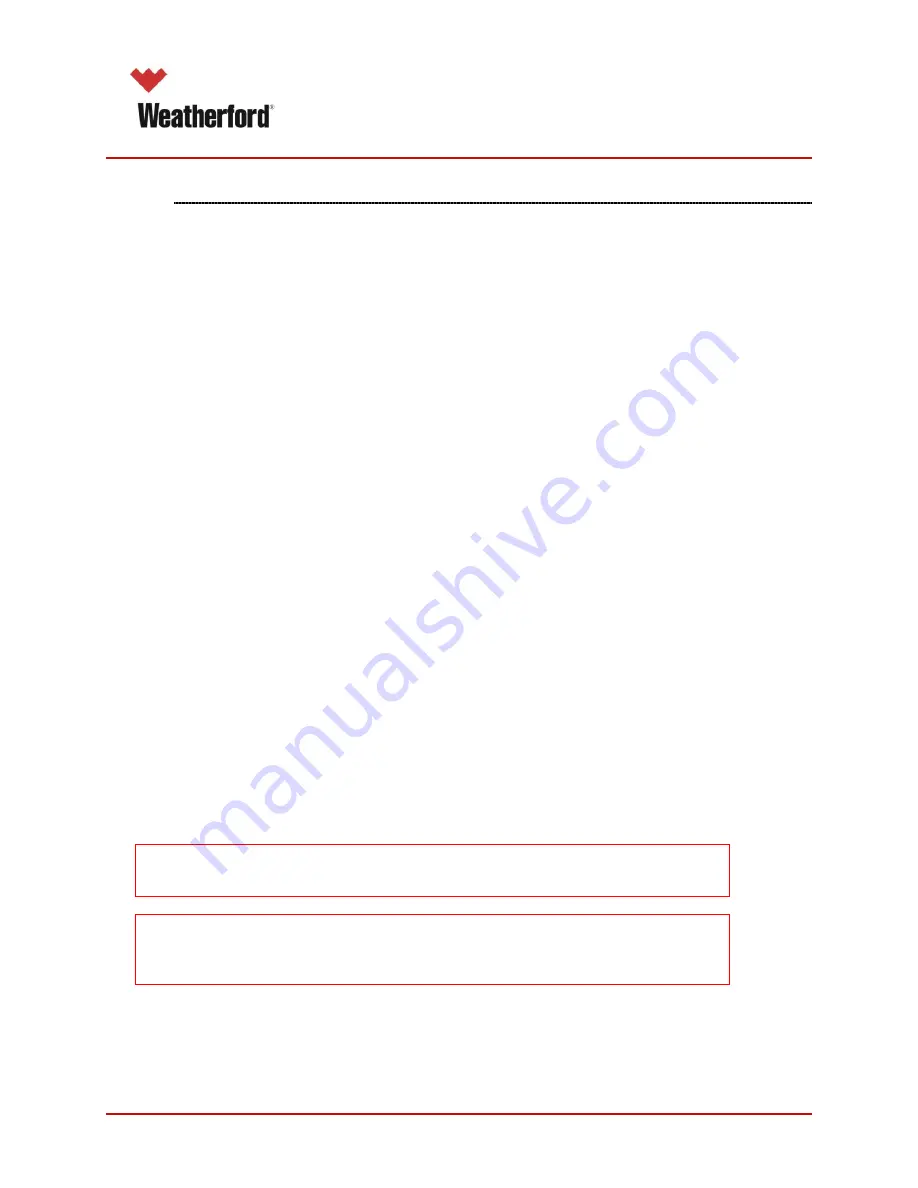
Pump and Fluid Systems
Chapter 2: Storage & Installation
weatherford.com
11
MP-16 2-Piece 5000 psi January 2013
2.1.5
Discharge System
The discharge piping is subject to damage due to the pulsations from the pump as well as
loads imposed by thermal expansion of the pipe. Generally, a single pulsation dampener
should be sufficient to handle such loads, but in cases of high output rates, two pulsation
dampeners may be required. By correctly handling these issues, the user can improve the
pump’s overall performance and longevity.
Strainer Cross
The discharge piping setup can be simplified by using a Strainer Cross. This system
provides two outlets for mud lines, a mounting for the discharge pulsation dampener and
incorporates a side connector for mounting a pressure gauge. In addition, it provides easy
access to the strainer, which should be checked and cleaned at least once a month.
Alternately, a standard discharge cross is available, which has many of the above benefits
but does not include a strainer.
The complete assembly may be flanged directly to either side of the pump discharge
manifold and is provided with an integral support mounted between the cross and the pump
skid. For full operating instructions, see the documentation provided by the manufacturer.
Piping
All discharge piping should be the same size as the outlet on the pump. Gradual turns
should be used to prevent unnecessary frictional pressure buildup and pipe erosion, and no
immediate turns next to the pump discharge should be used. 45° long radius elbows should
be used to minimize flow frictional pressure concerns. Furthermore, discharge piping should
be supported, but allowed to move along the axis of the pipe to ensure that any thermal
expansion will not unnecessarily load the fluid end connections.
Discharge Pulsation Dampener
A discharge pulsation dampener should always be utilized, as it will prevent harmonic
vibration from damaging the
discharge piping and significantly extend the pump’s operational
life. This system should be mounted on a discharge cross or strainer cross flanged directly to
the discharge manifold, before any valves or turns are placed in the discharge line.
For full operating instructions and guidelines for this equipment, see the documentation
provided by the pulsation dampener manufacturer.
WARNING
Always use a regulator in the line when charging the discharge
pulsation dampener. An uncontrolled increase of pressure can result
in catastrophic equipment failure and serious injury or death.
WARNING
Do not use air or oxygen to fill bladder, especially when pumping
flammable fluids, as it may combust and cause catastrophic equipment
failure and serious injury to personnel. In most cases, it is
recommended that nitrogen is used to fill the bladder.
Bypass Line
It is highly recommended that a bypass line be utilized. It will help to ease the start up
torque requirements on the primary driver, allow a low discharge of pressure to help pump
priming and ensure that lubrication is established prior to the load being applied.






























